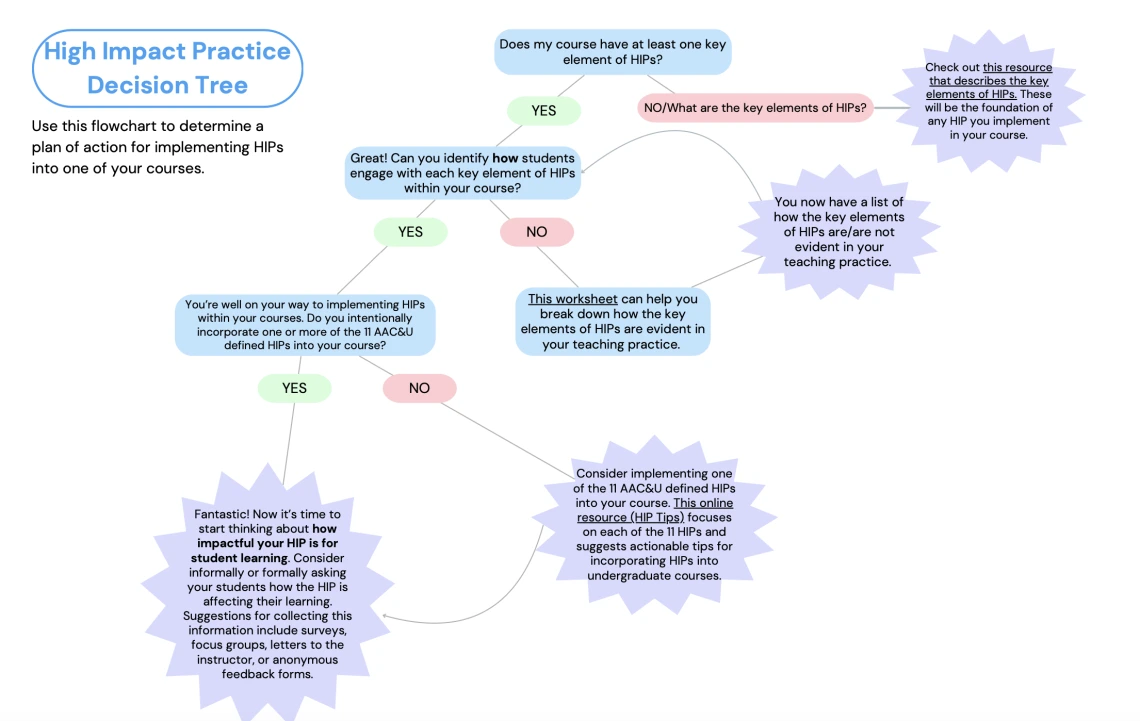
Welcome to HIP Tips!
This webpage introduces High Impact Practices (HIPs) and concrete strategies for implementation in your courses. Each card below offers brief, informational videos and downloadable tip sheets featuring research, resources, and reflection questions. Contact Dr. Audrey J. T. Kahn (ajtocco@arizona.edu) with questions!

Interested in using HIPs or elements of HIPs in your Gen Ed course? Think your course might already have a HIP in it? Want to reflect on the impactful or engaging elements of your course? We have a decision tree tool to help you reflect on your teaching!
Download a PDF of the decision tree (with links to resources and worksheets)
Click on each of the HIPs or HIP characteristics below to learn more!
HIP Characteristics
The Eight Key Characteristics of HIPs: An Overview
Learn about the key characteristics of High Impact Practices and engage with a tip for each.
Setting High Expectations for Student Learning
Learn about setting high performance expectations for students and the impact they can have on learning.
Investing Time and Effort into Learning
Learn a few tangible tips for encouraging students to invest significant time and effort into their learning.
Public Demonstration of Competence
Learn what public demonstrations of competence are and why they are highly impactful for learning.
Providing Opportunities to Reflect and Integrate Learning
Learn how reflection on and integration of learning can be highly impactful for students.
Creating Opportunities for Students to Apply Knowledge
Learn how encouraging students to apply knowledge to their lives and careers can be impactful for learning.
HIPs
Identifying HIPs
Learn about the HIPs embedded within the General Education program at the University of Arizona.
First Year Experiences
Learn how engaging students in first year experiences can foster the development of learning goals and the formation of relationships with instructors and peers.
Learning Communities
Learn how to leverage learning communities to promote shared and integrated learning.
Collaborative Assignments
Learn how to use high impact collaborative assignment elements to improve student learning.
Undergraduate Research
Learn how to promote student involvement in undergraduate research experiences.
Experiential Learning
Learn how to implement three different experiential learning methods to promote transformative learning.
Interested in learning more about incorporating HIPs into your teaching?
Click here to schedule a consultation with Audrey
or, to see some HIPs in action, check out the
Exceptional Signature Assignment Repository

